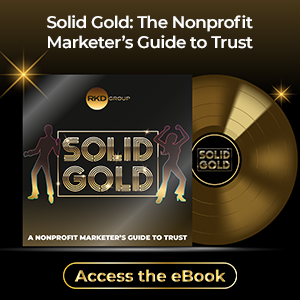As you begin preparations for January’s direct mail appeals, now is the perfect time to put a magnifying glass on your donor database.
For a variety of reasons (which we’ll discuss), your nonprofit organization likely has donors marked as “do not mail.” The big question is: Do you know what those reasons are?
And here are a few more questions you might consider:
- Does your file contain notes that list why you marked the donor as “do not mail”?
- How long ago did you put these individual donors into this group?
- Did the donors ask you to mark them this way or did you choose to suppress them?
If you’re not sure about the answers to these questions, don’t be alarmed. We often see this confusion among nonprofits. This is especially true if you’ve cycled through several development directors and/or data entry specialists in recent years.
Different directors have different styles and preferred vendors when it comes to donor data suppression. That alone is not a big deal. The problem arises from a lack of communication from one regime to the next.
Take this scenario: A previous development director asked donors how many mailings they’d like to receive. Based on their responses, the organization honored their wishes – including those who asked for no mailings.
A new development director enters. She begins to examine the donor database and sees this group of “do not mail” donors. However, there is nothing that indicates when or why these donors were removed.
In another scenario, a major donor officer marked all mid-major donors as “do not mail” in the database but failed to indicate the reason. Two years later, the new development director is confused. He can't figure out why these now-lapsed donors have not been receiving any direct response communications.
Finally, from a real case file, a “do not mail” donor found out about a matching challenge appeal at lunch with a friend. That donor was upset that they had not been made aware. The donor called and let the development director know they would have made a large gift to help meet the match.
These situations happen more often than you might think. They typically lead to a significant loss in revenue for nonprofit organizations. If you haven’t examined your donor database in a while, here are three simple ways you can begin to clean up your donor data suppression practices:
1. ADD LAPSED DONORS BACK IN AFTER 24 MONTHS.
If the “do not mail” donor has not made a gift in the past two years, consider including that person in the direct mail program during the holiday season. Try a “dear friend” strategy (instead of using the donor’s name) for re-engagement.
2. ASK TO MAINTAIN A LINE OF COMMUNICATION.
When a donor calls and asks to be removed from the mailing list or asks to not receive mail anymore, find out if it is OK to send them important news and updates about the organization (i.e., the newsletter). This allows you to stay in front of the donor and provide some level of communication.
3. MARK THE DATE AND REASON FOR FLAGGING.
When marking donors as “do not mail,” it’s always good practice to add the date of when the flag was added and the reason why. This may not fix the existing suppression issues, but it will be a huge help going forward.
These are just a few easy tips to begin the process of examining your donor database. This may seem like tedious work, but you are leaving thousands of dollars on the table if you ignore it.





Leave a comment: